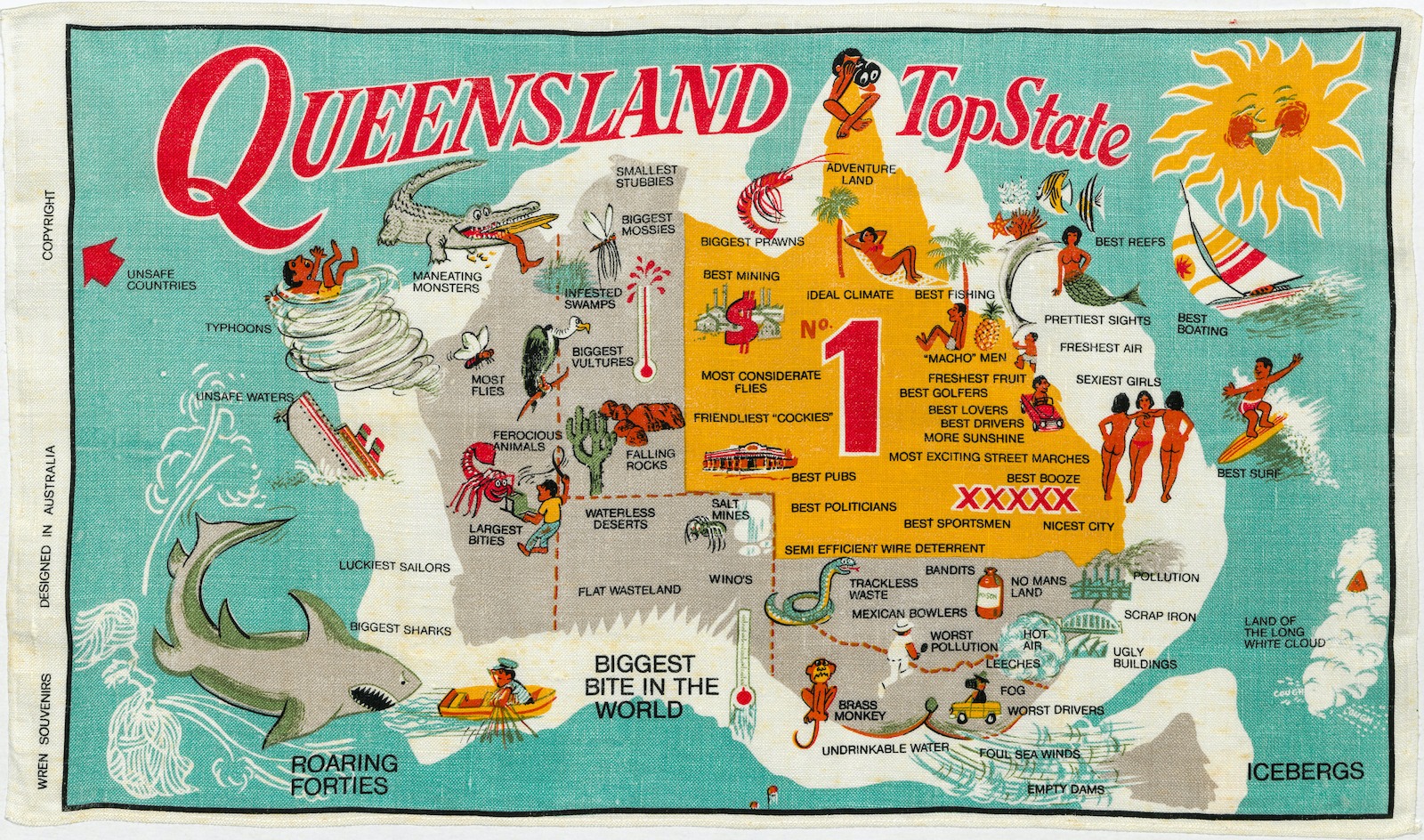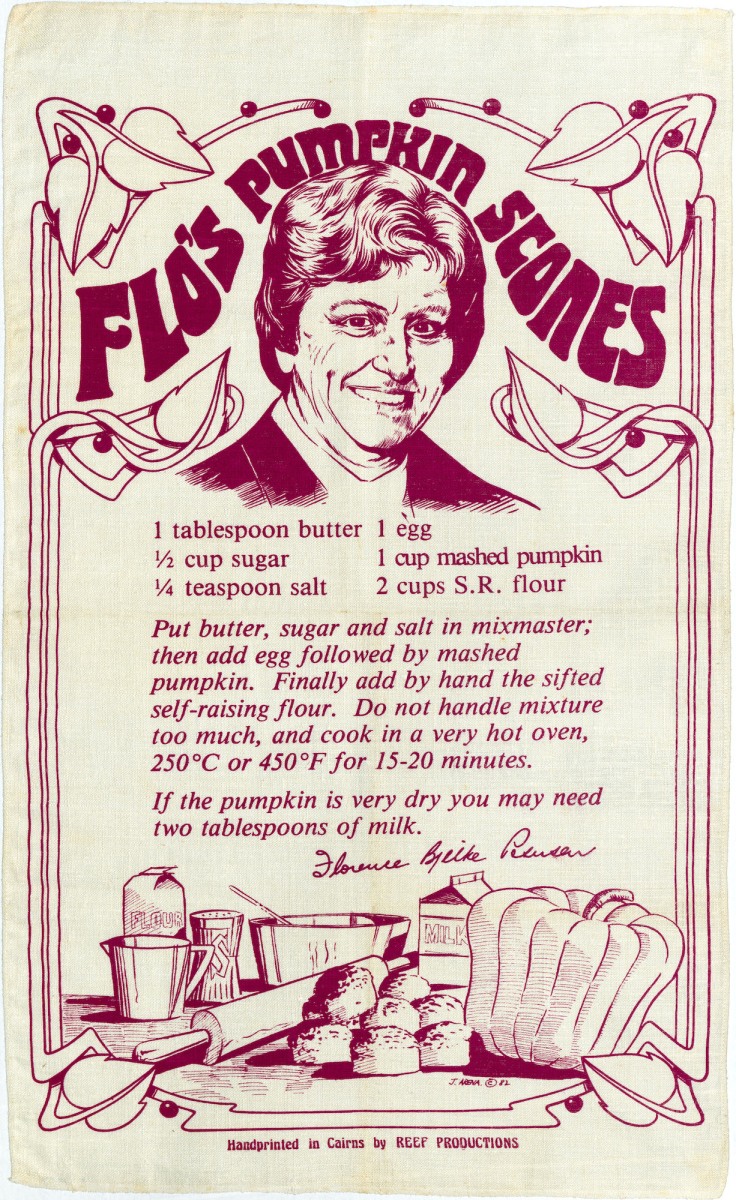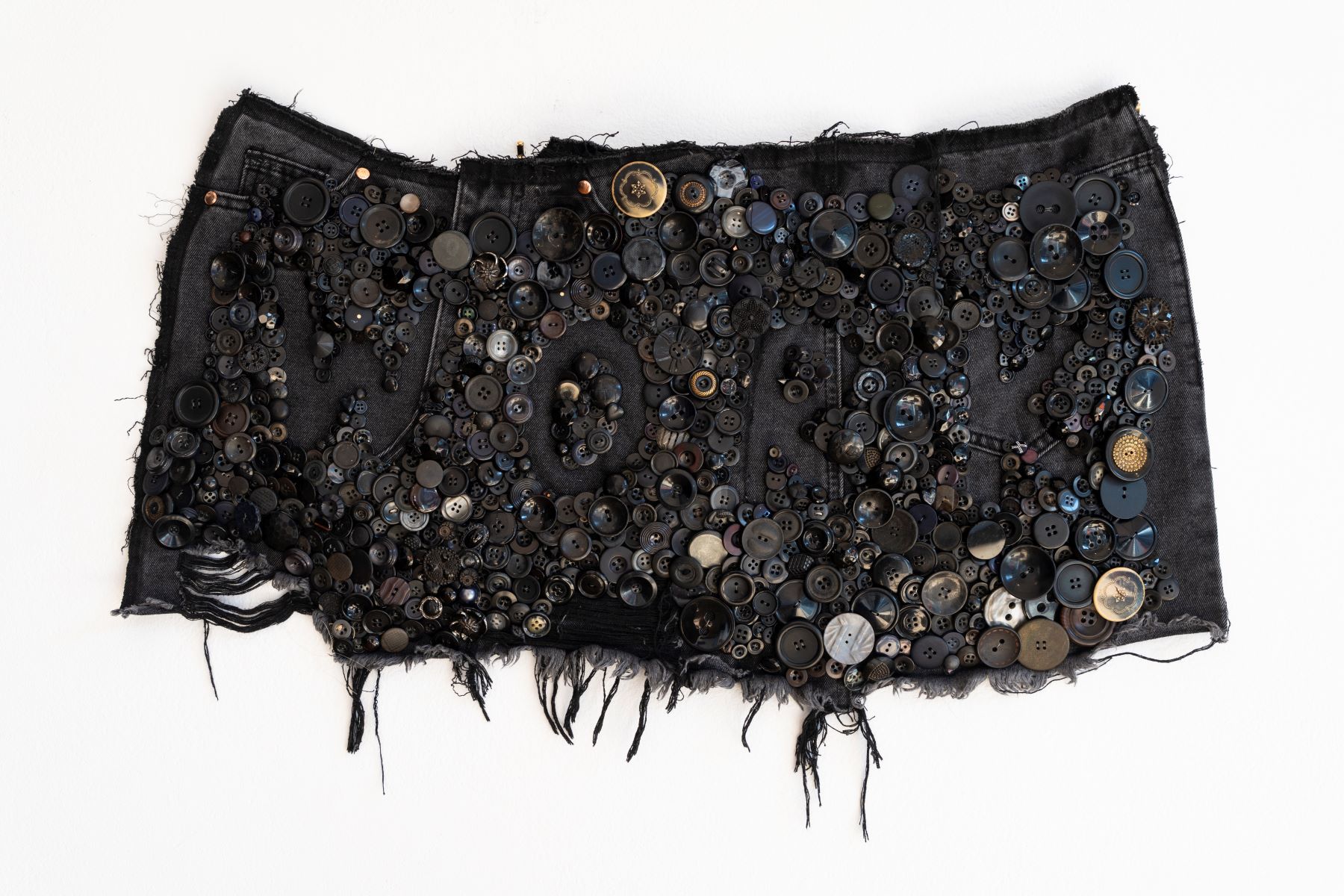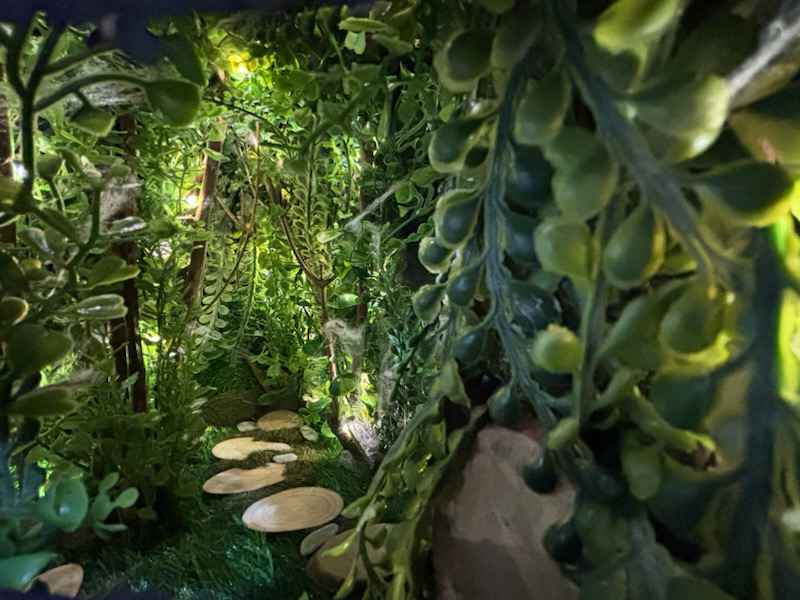My first encounter with this exhibition feels like stumbling upon one of the ‘Big Thing’ tourist attractions that Queensland is so well known for, the Big Pineapple, Big Avocado, Big Banana (though that one belongs to the southern states, not to so-called banana bender country). It’s Saturday morning and I’m walking the short distance across Stanley Place from GOMA to QAG, taking in the blue sky, August sunshine, and a hint of summer in the warm breeze. Looking up, the large-scale promotional banner for Queensland to a T on the outer wall of the State Library of Queensland catches my eye and pulls me in with a photo montage of larger-than-life tea-towels, all bright, garish colours and kitsch galore. A wave of familiarity overtakes me and I smile: I know these images! They tell stories that are a part of me.
Straight away, I’m transported back to distant childhood and plunged into a deep swimming pool of nostalgia. In a melee of sensations, the familiar colours, fonts and images bring back long forgotten smells and scenes of growing up in the eighties and early nineties, of visiting friends and doing dishes in everyone’s mum’s kitchen, of tourist gift shops, of summer holidays at grandma’s.
At grandma’s is precisely where you’d expect to find a collection of tea towels. Not in a major cultural institution, and even less so the focus of a dedicated exhibition. Historian, curator, and collector Glenn R. Cooke, whose textile collection at the State Library holds more than 200 souvenir tea towels, which are on display in Queensland to a T, agrees. “I have searched the great cultural institutions of the world which, at most, have a handful [of tea towels] and none have such a comprehensive focus,” Cooke said.
So now there’s another Big Thing that makes Queensland unique: it’s Queensland to a T. And in typical Queensland style, it’s the mix of quirky, fun, and unusual (sometimes bizarre) content, the outlandish kitsch and bold claims to greatness presented on the humblest of supports–the low-cost, barely remarkable tourist tea towel–that make this Big Tea Towel exhibition all kinds of delightful.
Inside, the exhibition is a fascinating mix of curious discoveries and “Oh, I remember this!” moments. I recommend visiting with family and friends of a certain age, as it’s sure to spark plenty of fond recollections and joyful conversations. A series of wall plaques included throughout the exhibition documents Queenslanders’ responses to the tea towel collection. For example, well-known weather presenter Jenny Woodward shares a memory of painstakingly hand-tracing and colouring maps in Social Studies. This, particularly, spoke to me as I remember doing the same.
The exhibition is presented in three sections that “help tell the social history of the state and explain how Queenslanders saw their local communities” from the early 1960s to the 1990s. According to the tea-towel evidence presented here, Queenslanders’ vision of themselves in those years might be summarised with words like humour, ingenuity, and ambition. The section Destination Queensland includes numerous map- and place-based designs touting the merits and attractions of Queensland towns and regions, whether established or would-be tourist destinations. A memorable one is “Queensland Top State,” a pictorial comparison of Australian states. It shows a continent rife with horrors in all but sunny Queensland, where visitors are promised the “biggest prawns,” “best pubs,” “freshest air,” and “best reefs,” as well as the more questionable attractions of “macho men,” “best politicians,” and something called “semi efficient wire deterrent”.
Domestic Threads centres on the home and kitchen as the traditionally feminine sphere where tea towels are typically found. It features tea towels depicting women, women’s activities, and designs by women, as well as iconic recipes printed on tea towels, including the famous “Flo’s [Bjelke-Peterson] Pumpkin Scones.” Curiously, politicians’ (and their wives’) faces seem to have been a popular motif in the 1980s, as revealed by several examples in this section, and it’s amusing now to wonder why and who might have purchased these for home use or as a souvenir.
Attractive by Design looks at stylistic trends in the tea towel, linking these to changes in print technologies, cultural shifts in Queensland’s visual identity, and the role of individual artists, designers, and entrepreneurs in influencing change. A fascinating video traces how prolific screen printers in North Queensland came to collaborate with prominent Indigenous artists, like renowned ceramicist Thancoupie, making innovative use of the inexpensive and highly mobile medium of the tea towel for cultural expression, promotion, and income generation.
Queensland to a T is on display at SLQ Gallery until 22 January 2023. The accompanying public program looks interesting and varied, with free curators’ tours and heritage talks scheduled approximately fortnightly, and tea towel design and sewing workshops available for a fee.
Angela Timbs writes, researches, and facilitates conversations on art, culture, and community.








